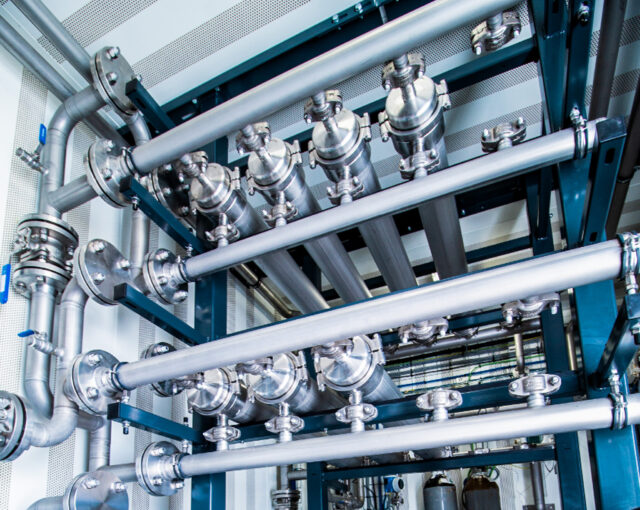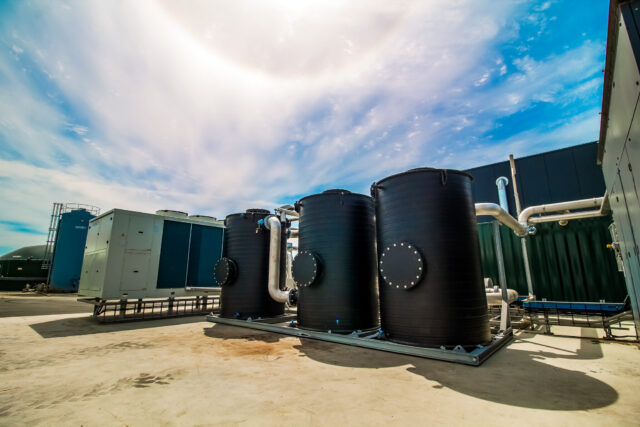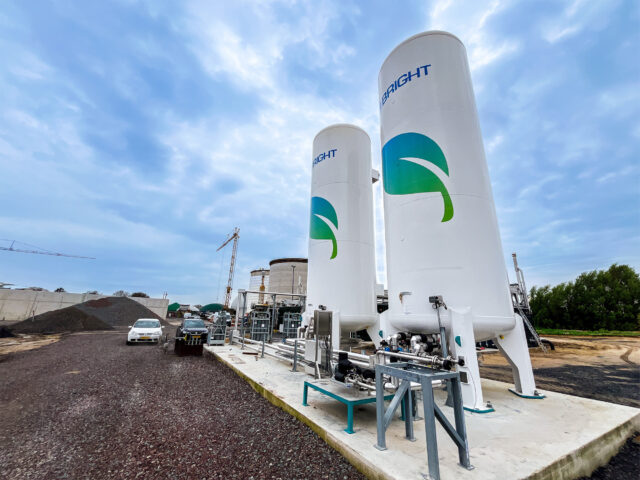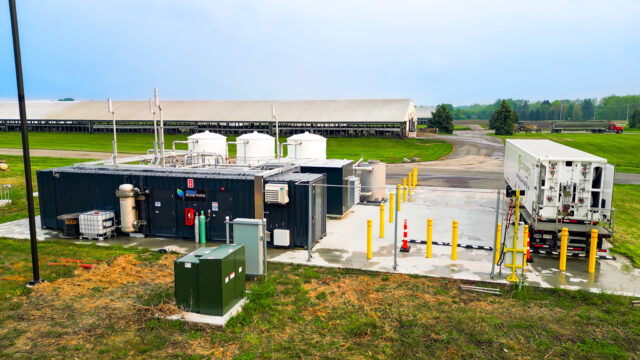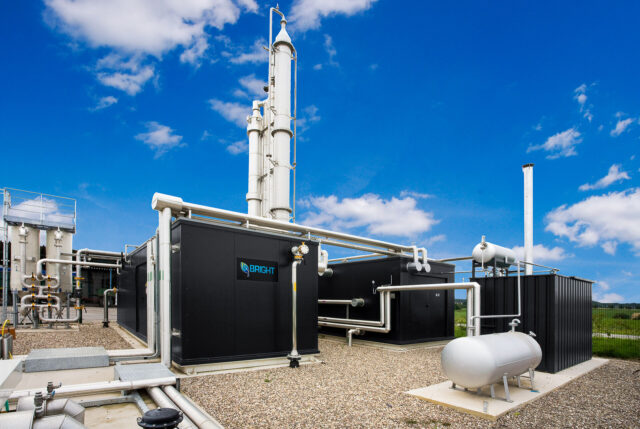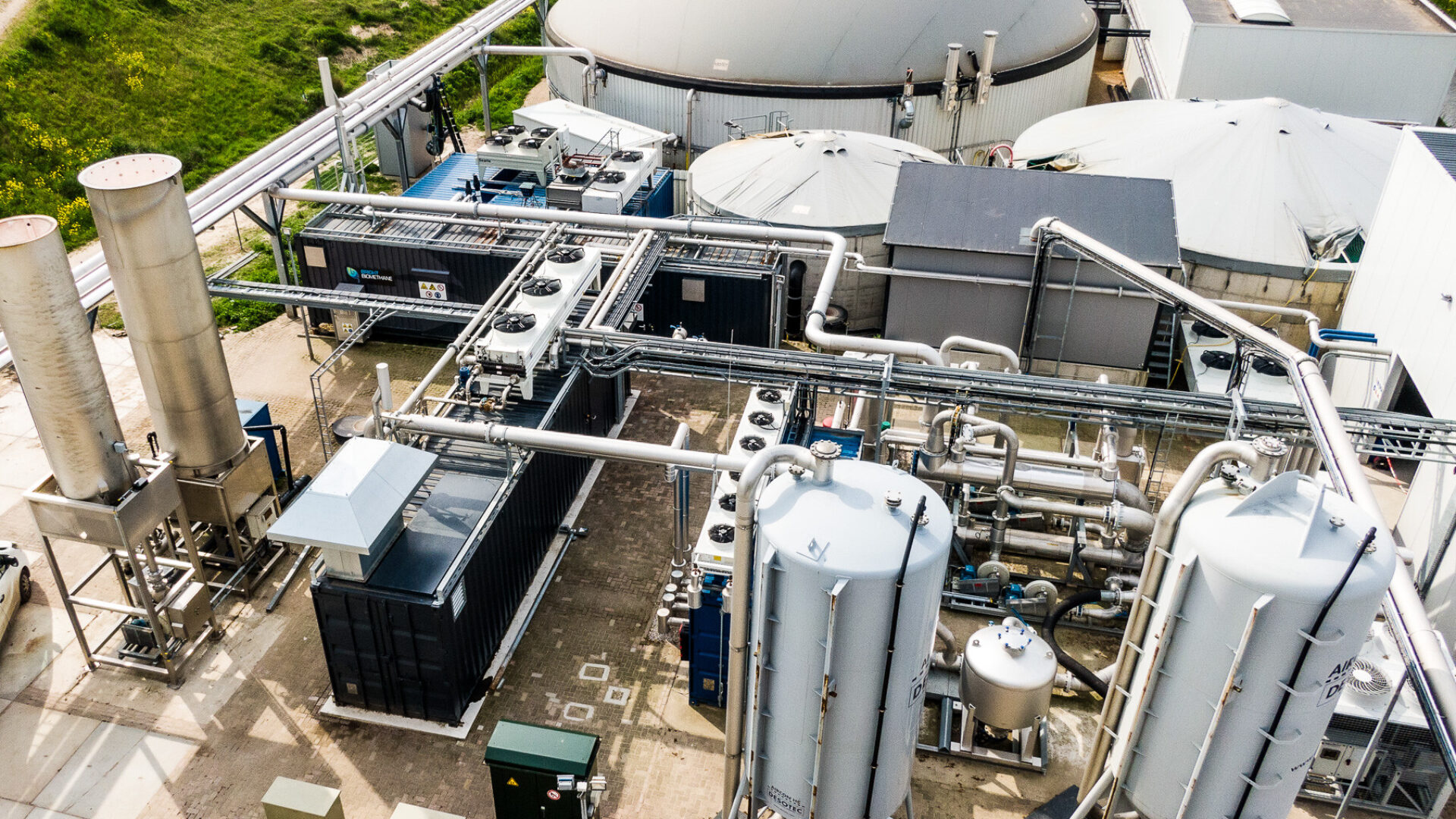
Bio-LNG: polishing & liquefaction
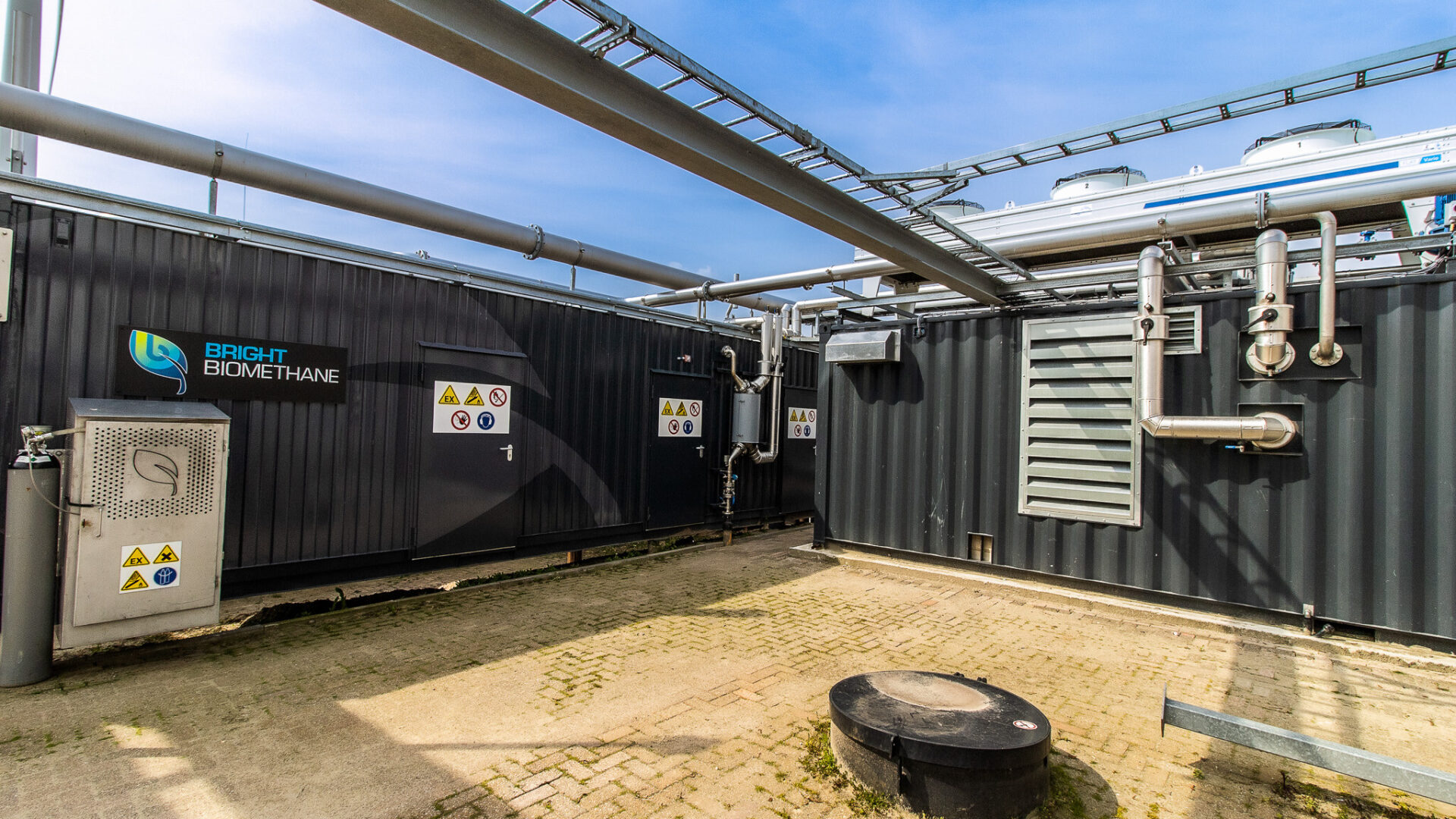
Biomethane polishing
Utilizing our compact and modular-designed bio-LNG systems, every biogas producer can profit from and expand their sustainable renewable natural gas (RNG) operations. Post biogas upgrading, the gas primarily consists of 98% methane and less than 2% CO2, nitrogen, and residual oxygen. In order to generate bio-LNG, the CO2 needs to be removed from the RNG – which starts with biomethane polishing. This process employs Temperature Pressure Swing Adsorption (TPSA) technology, effectively reducing carbon dioxide levels to less than 50 parts per million (ppm).
Process steps

How does it work?
- Biomethane liquefaction initiates following the upgrading of biogas.
- The RNG stream undergoes compression and thereafter polishing using TPSA technology.
- Necessary cooling is provided, through multiple synthetic refrigerant cycles.
- The liquefaction of biomethane is achieved using Single Mixed Refrigerant (SMR) technology.
- Bio-LNG is preserved at temperatures ranging from -150 to -155 degrees Celsius.
- Following storage, the bioLNG is loaded onto trucks for transport to various utilization points.

Bio-LNG process
Biomethane liquefaction technology starts with the compression of the renewable natural gas (RNG) stream. Thereafter the polishing step occurs with TPSA, temperature pressure swing absorption. Within these polishing steps the CO2 content within the RNG is reduced to less than 50 PPM (parts per million). Biomethane liquefaction is achieved through Single Mixed Refrigerant (SMR) technology, which involves multiple synthetic refrigerant cycles operating in parallel at different stages to provide the necessary cooling. The produced bioLNG is maintained at a pressure of 2 to 4 bars and a temperature ranging from –150 to -155 degrees Celsius.
The off-gas produced from the TPSA process undergoes a single-stage membrane upgrading process before being reintegrated into the biomethane liquefaction system. This step is crucial for minimizing renewable natural gas loss and enhancing the efficiency of bio-LNG production.
